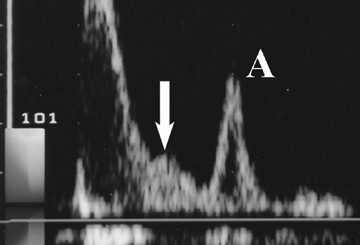Medicine MCQs -1
Contents
- 1 Jordans anomaly shows persistent vacuolation of -
- 2 Patient presented with clinical symptoms include bleeding problems and on examination found to have hepatosplenomegaly blood parameters shows thrombocytopenia, elevated bile acid with normal bilirubin, and mildly prolonged prothrombin time and elevated concentrations of ribitol, arabitol, and erythritol in urine sample. Which of the following is the possibility?
- 3 Tay–Sachs disease is caused by insufficient activity of the enzyme -
- 4 PGL4 syndrome is caused by mutation of -
- 5 Tay–Sachs disease is caused by a genetic mutation in -
- 6 When both parents are carriers for Tay–Sachs disease there is how much % risk of giving birth to an affected child with each pregnancy?
- 7 Cherry-red spot at macula is seen in all of the following cases EXCEPT -
- 8 Tay–Sachs disease becomes apparent almost always by which month of life?
- 9 Sea-blue histiocytes are seen in all of the following EXCEPT-
- 10 Which of the following is called as Vanishing white matter disease-
Jordans anomaly shows persistent vacuolation of -
Jordans anomaly [Jordans bodies]- persistent vacuolation of granulocytes and monocytes in the peripheral blood and bone marrow.
ordans' anomaly is a characteristic finding in Chanarin-Dorfman syndrome and other neutral lipid storage diseases.
Associated with mutations in the PNPLA2 gene
Patient presented with clinical symptoms include bleeding problems and on examination found to have hepatosplenomegaly blood parameters shows thrombocytopenia, elevated bile acid with normal bilirubin, and mildly prolonged prothrombin time and elevated concentrations of ribitol, arabitol, and erythritol in urine sample. Which of the following is the possibility?
Transaldolase (TALDO) Deficiency
Clinical symptoms include-
Bleeding problems, hepatosplenomegaly, liver cirrhosis, thrombocytopenia, elevated bile acid with normal bilirubin, and mildly prolonged prothrombin time
The deficiency of TALDO enzyme is diagnosed by elevated concentrations of ribitol, arabitol, and erythritol in urine sample.
Tay–Sachs disease is caused by insufficient activity of the enzyme -
Tay–Sachs disease is caused by insufficient activity of the enzyme hexosaminidase A
Krabbe disease is caused by-
mutations in the
GALC gene located on chromosome 14
Autosomal recessive
Mutations in the GALC gene cause a deficiency of an enzyme called galactosylceramidase.
Mutations in the SMPD1 gene cause Niemann–Pick disease types A and B.
They produce a deficiency in the activity of the lysosomal enzyme acid sphingomyelinase which breaks down the lipid sphingomyelin
PGL4 syndrome is caused by mutation of -
PGL4 syndrome - due to SDHB mutations
SDHB gene provides instructions for making one of four subunits of the succinate dehydrogenase (SDH) enzyme.
Tay–Sachs disease is caused by a genetic mutation in -
Hexosaminidase A (alpha polypeptide)[ HEXA] is an enzyme that in humans is encoded by the HEXA gene, located on the 15th chromosome.
Tay–Sachs disease is caused by a genetic mutation in the HEXA gene
When both parents are carriers for Tay–Sachs disease there is how much % risk of giving birth to an affected child with each pregnancy?
Tay–Sachs disease is an autosomal recessive genetic disorder- when both parents are carriers, there is a 25% risk of giving birth to an affected child with each pregnancy
Cherry-red spot at macula is seen in all of the following cases EXCEPT -
Cherry-red spot at macula in Metabolic Storage Diseases:
Tay–Sachs disease
Farber disease
GM1 and GM2 gangliosidoses
Metachromatic leukodystrophy
Niemann–Pick disease
Sandhoff disease
Sialidosis
Tay–Sachs disease becomes apparent almost always by which month of life?
Tay–Sachs disease - disease becomes apparent in the first weeks and months of life, almost always by the fourth month
Sea-blue histiocytes are seen in all of the following EXCEPT-
Sea-blue histiocytes is a secondary finding associated with -
myelodysplastic syndromes,
lymphomas,
chronic myelogenous leukemia,
idiopathic thrombocytopenic purpura,
Niemann-Pick disease,
Norum disease
Sea-Blue histiocytosis
Synonyms
Inherited Lipemic Splenomegaly
Histiocytosis, sea-blue
Sea-Blue histiocyte disease
Which of the following is called as Vanishing white matter disease-
Vanishing white matter disease-
Childhood ataxia with central hypomyelination (CACH),
Genetic leukoencephalopathy due to mutations in EIF2B subunit mutations,
Extensive white matter involvement with cavitary changes.





